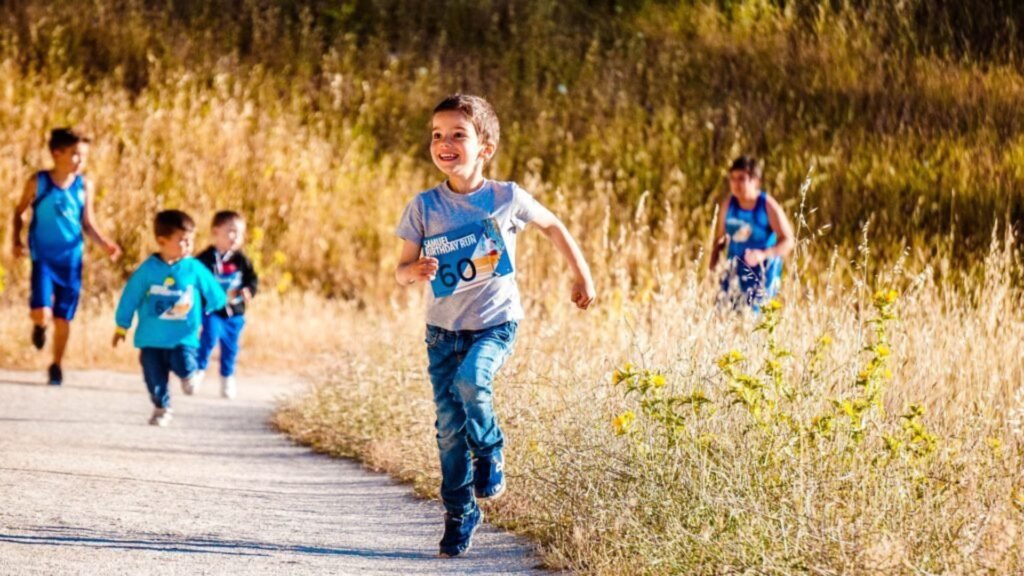Promoting a positive body image in children is crucial for their self-esteem and overall well-being. As children grow, they become increasingly aware of their appearance and how they compare to others. Parents, educators, and caregivers play a significant role in shaping how children view themselves. This article provides practical strategies to foster a positive body image and support healthy self-esteem in children.

1. Model Positive Body Image
A. Demonstrate Healthy Attitudes
- Speak Positively About Your Body: Avoid negative comments about your own body. Instead, focus on the positive aspects and express gratitude for your body’s abilities.
- Avoid Diet Talk: Steer clear of discussions about dieting or body dissatisfaction around children. Emphasize healthy habits over appearance.
B. Promote Healthy Behaviors
- Encourage Balanced Nutrition: Focus on the benefits of nutritious foods for energy and health rather than weight or appearance. Make mealtimes enjoyable and educational.
- Celebrate Physical Activity: Promote physical activities as fun and empowering, rather than focusing on weight loss or appearance. Engage in activities together as a family.
2. Foster a Supportive Environment
A. Encourage Open Conversations
- Discuss Body Image: Talk openly about body image with children. Help them understand that bodies come in all shapes and sizes and that everyone is unique.
- Address Media Influence: Discuss how media and advertisements often portray unrealistic body standards. Encourage critical thinking about these messages.
B. Support Emotional Health
- Validate Feelings: Listen to and validate your child’s feelings about their body. Offer reassurance and emphasize their worth beyond physical appearance.
- Promote Self-Compassion: Teach children to practice self-compassion and kindness. Encourage them to treat themselves with the same respect and care they offer to others.
3. Build Self-Esteem and Confidence
A. Focus on Strengths and Achievements
- Highlight Abilities: Encourage children to recognize and appreciate their talents, skills, and achievements. Praise their efforts and accomplishments, not just their appearance.
- Set Realistic Goals: Help children set and achieve personal goals that focus on growth and self-improvement. Celebrate their progress and successes.
B. Encourage Positive Self-Talk
- Teach Affirmations: Introduce positive affirmations and self-talk practices. Encourage children to use affirmations that reinforce their strengths and self-worth.
- Challenge Negative Thoughts: Help children identify and challenge negative thoughts about their appearance. Teach them to reframe these thoughts with positive, realistic perspectives.
4. Promote Media Literacy
A. Analyze Media Messages
- Critique Media Images: Discuss with children how media images are often digitally altered and do not represent real-life bodies. Help them understand the impact of these portrayals.
- Select Positive Media: Choose media that showcases diverse and realistic body types. Provide examples of media that promote body positivity and self-acceptance.
B. Limit Exposure to Negative Influences
- Monitor Media Consumption: Be mindful of the media your child consumes. Limit exposure to content that promotes unrealistic body standards or perpetuates body shaming.
- Encourage Positive Content: Encourage engagement with media that promotes healthy lifestyles, diverse representations, and positive self-image.
5. Create a Body-Positive Culture at Home
A. Emphasize Health Over Appearance
- Focus on Well-Being: Shift the focus from appearance to overall health and well-being. Discuss how healthy habits benefit the body and mind.
- Celebrate All Bodies: Emphasize that all bodies are valuable and worthy of respect. Celebrate the diversity of body types within your family and community.
B. Build a Supportive Community
- Encourage Positive Friendships: Help your child form friendships with peers who have a healthy and positive attitude toward their own bodies and those of others.
- Participate in Body-Positive Activities: Engage in community events or groups that promote body positivity and self-acceptance. Support organizations that advocate for positive body image.
6. Educate and Empower
A. Provide Body Image Education
- Teach Body Diversity: Educate children about body diversity and the natural variations in body shapes and sizes. Use books, resources, and discussions to reinforce these concepts.
- Promote Healthy Habits: Educate children about the importance of balanced nutrition, regular physical activity, and mental wellness as part of a healthy lifestyle.
B. Empower with Knowledge
- Encourage Critical Thinking: Help children develop critical thinking skills to question and evaluate body image messages they encounter in media and society.
- Support Personal Growth: Encourage children to explore and pursue interests and hobbies that build confidence and self-esteem beyond their physical appearance.
Conclusion
Promoting a positive body image in children involves modeling healthy attitudes, fostering supportive environments, building self-esteem, and educating about media influences. By focusing on strengths, encouraging positive self-talk, and creating a body-positive culture, parents and caregivers can help children develop a healthy and confident self-image. Supporting children in understanding and valuing their bodies contributes to their overall well-being and happiness.

